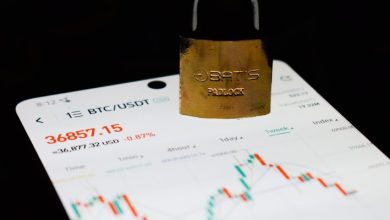The Effect of Large Transactions on Crypto Market Stability

- The Impact of Whale Transactions on Cryptocurrency Prices
- Analyzing the Relationship Between Large Orders and Market Volatility
- How Institutional Investors Influence Crypto Market Stability
- The Role of Big Trades in Shaping the Future of Digital Assets
- Examining the Ripple Effects of Mega Transactions on Cryptocurrency Markets
- Strategies for Mitigating Risks Associated with Major Transactions in the Crypto Space
The Impact of Whale Transactions on Cryptocurrency Prices
Large transactions involving significant amounts of cryptocurrency, known as whale transactions, have a notable impact on the overall stability and price movements in the crypto market. These transactions, often conducted by wealthy individuals or institutional investors, can create substantial fluctuations in prices due to the sheer volume of assets being bought or sold.
Whale transactions are closely monitored by market analysts and traders as they can signal potential market trends or shifts in investor sentiment. When a whale makes a large purchase or sale, it can lead to a domino effect as other traders react to the movement, causing prices to spike or drop rapidly.
The influence of whale transactions on cryptocurrency prices has been a topic of debate within the industry. Some argue that these transactions contribute to market manipulation, while others see them as a natural part of a free-market system. Regardless of the perspective, it is clear that whale transactions play a significant role in shaping the overall landscape of the crypto market.
Investors and traders must remain vigilant and adapt their strategies accordingly when faced with large whale transactions. Understanding the potential impact of these transactions on prices can help mitigate risks and capitalize on opportunities in the ever-evolving crypto market. By staying informed and monitoring whale activity, market participants can navigate the volatility and uncertainty that often accompanies such transactions.
Analyzing the Relationship Between Large Orders and Market Volatility
Large orders in the cryptocurrency market can have a significant impact on market volatility. When a large transaction occurs, it can cause prices to fluctuate rapidly as the market adjusts to the sudden influx or outflow of assets. This volatility can create opportunities for traders to profit, but it can also lead to increased risk and uncertainty for investors.
Analyzing the relationship between large orders and market volatility is crucial for understanding how these transactions can impact the stability of the crypto market. By studying the patterns and trends associated with large orders, researchers can gain valuable insights into how these transactions influence price movements and overall market dynamics.
One key finding from this analysis is that large buy or sell orders can trigger a domino effect, causing other traders to follow suit and further exacerbate price fluctuations. This chain reaction can create a snowball effect, leading to increased volatility and potentially destabilizing the market.
Moreover, the frequency and size of large orders can also signal market manipulation or insider trading, which can further erode trust and confidence in the crypto market. Regulators and market participants must remain vigilant and proactive in monitoring and addressing any suspicious or manipulative activities to maintain market integrity and protect investors.
In conclusion, the relationship between large orders and market volatility is a complex and multifaceted issue that requires ongoing research and analysis. By understanding how these transactions impact market stability, stakeholders can develop strategies to mitigate risks and promote a more secure and resilient cryptocurrency market.
How Institutional Investors Influence Crypto Market Stability
Large institutional investors play a significant role in influencing the stability of the crypto market. When these major players enter the market with substantial transactions, they can cause significant fluctuations in prices. Their actions can create a domino effect, impacting other traders and investors in the market.
One way institutional investors influence crypto market stability is through their sheer volume of trades. Their large transactions can lead to sudden spikes or drops in prices, causing volatility in the market. This volatility can be detrimental to the overall stability of the market, as it may deter smaller investors from participating.
Moreover, institutional investors often have access to advanced trading tools and strategies, allowing them to make informed decisions that can sway the market in their favor. This can create an uneven playing field for retail investors, who may not have the same resources at their disposal.
It is essential for regulators and market participants to closely monitor the activities of institutional investors in the crypto market to ensure fair and stable trading conditions for all participants. By implementing measures to prevent market manipulation and promote transparency, the crypto market can become more resilient to the influence of large transactions by institutional investors.
The Role of Big Trades in Shaping the Future of Digital Assets
Significant transactions play a crucial role in influencing the trajectory of digital assets in the market. These large trades can have a profound impact on the stability and direction of cryptocurrencies and other digital tokens. Understanding the implications of big trades is essential for investors and market analysts to make informed decisions.
Big trades can create substantial price movements, leading to increased volatility in the crypto market. Whether it’s a massive buy or sell order, these transactions can trigger a domino effect, causing a ripple effect across various digital assets. As a result, market participants need to closely monitor these large trades to anticipate potential market shifts.
Moreover, big trades can also indicate market sentiment and investor confidence in specific cryptocurrencies. A sudden surge in large transactions can signal growing interest and demand for a particular digital asset, while a significant sell-off may reflect negative sentiment and a lack of trust in the asset’s future performance.
By analyzing the patterns and trends of big trades, market participants can gain valuable insights into the dynamics of the crypto market. This information can help investors identify potential opportunities and risks, allowing them to adjust their trading strategies accordingly. Ultimately, understanding the role of big trades is essential for shaping the future of digital assets and ensuring market stability.
Examining the Ripple Effects of Mega Transactions on Cryptocurrency Markets
Examining the ripple effects of mega transactions on cryptocurrency markets can provide valuable insights into the overall stability and volatility of these digital assets. When large transactions are executed, they can have a significant impact on the price movements of cryptocurrencies, leading to both positive and negative repercussions for investors and traders alike.
One of the key ripple effects of mega transactions is increased market liquidity, as large buy or sell orders can quickly be matched with corresponding orders from other market participants. This can lead to a more efficient price discovery process, as well as reduce the potential for price manipulation by individual traders or groups.
On the other hand, mega transactions can also result in heightened market volatility, especially if they are executed without proper risk management strategies in place. Sudden large buy or sell orders can cause prices to spike or plummet, creating uncertainty and panic among market participants.
Furthermore, the ripple effects of mega transactions can extend beyond the immediate price impact, influencing market sentiment and overall investor confidence. If a large transaction is perceived as a signal of market manipulation or insider trading, it can erode trust in the cryptocurrency market as a whole.
Overall, examining the ripple effects of mega transactions on cryptocurrency markets is crucial for understanding the dynamics of these digital assets and ensuring their long-term stability and growth. By analyzing the impact of large transactions on liquidity, volatility, and market sentiment, investors and regulators can make more informed decisions to mitigate risks and promote a healthy market environment.
Strategies for Mitigating Risks Associated with Major Transactions in the Crypto Space
When dealing with major transactions in the crypto space, it is crucial to implement effective strategies to mitigate associated risks. Here are some key approaches to consider:
- Diversification: Spreading investments across different cryptocurrencies can help reduce the impact of a single large transaction on market stability.
- Staggered Trading: Breaking up large transactions into smaller parts and executing them over time can minimize price volatility.
- Utilizing Stop-Loss Orders: Setting up stop-loss orders can automatically sell assets if prices drop below a certain threshold, limiting potential losses.
- Monitoring Market Trends: Keeping a close eye on market trends and news can help anticipate potential risks and make informed decisions.
- Utilizing Risk Management Tools: Leveraging risk management tools such as derivatives and options can help hedge against market fluctuations.
By incorporating these strategies into your approach to major transactions in the crypto space, you can better protect your investments and navigate the volatile nature of the market with more confidence.



